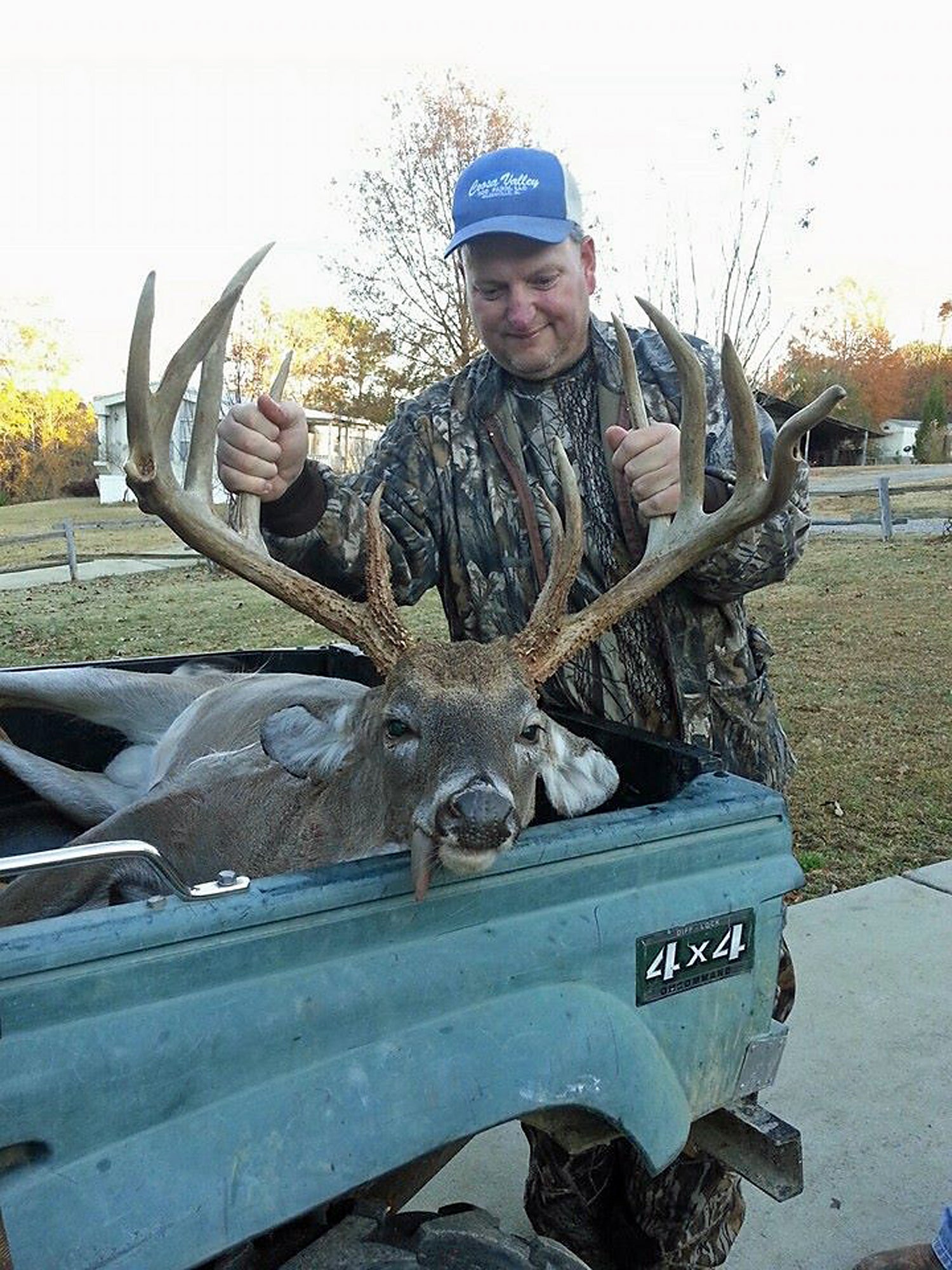By DAVID RAINER, Alabama Department of Conservation and Natural Resources
Mike Jones’ son, 12-year-old Chase, learned a valuable lesson about deer hunting recently – you can’t shoot ‘em if you’re lying in the bed.
The elder Jones said he decided to climb into a deer stand on his father-in-law Jerry Hill’s land after his son balked at rising early two days in a row. That decision paid off with one of the largest bucks taken in Alabama lately. Buckmasters scored the deer at 188 3/8, although the traditional Boone & Crockett scoring system will deduct for some irregular points, including a split brow tine.
“I told my son, I promise you’ll never kill one if you don’t get up,” Mike said. “I would have let him shoot that deer, but he just wouldn’t go with me that morning.”
Mike went to the 110 acres near Wilsonville and climbed up into the stand that was only a few yards from Hill’s driveway.
“He just came walking right up the middle of the driveway about 10 minutes after daylight with his nose stuck in the air, trailing a doe,” he said. “I popped him. He ran about 50 yards and fell over. It was just that simple.”
Mike said his father-in-law has the deer’s shed antler from last year, so they knew there was a good buck in the area.
“The antler is almost exactly the same except it’s bigger this year,” he said. “That’s one thing I can say about Jerry. He lets the grandkids kill one small buck. After that it has to be mature bucks.”
In years past, rumors of big deer taken like Jones’ deer in Alabama were often quickly passed around the hunting community. Sometimes the big deer were confirmed kills, but many other fabulous tales of monster bucks faded away with no proof that the animals weren’t still prowling the hardwood bottoms and pine plantations that abound in our state.
Wow, how things have changed. With the advent of social media, especially Facebook, confirmation of the huge bucks that make Alabama home has been abundant this year. Almost every day since the start of archery season, a photo of a happy hunter and a big buck has adorned the usual pages on the Internet.
Chris Cook, Deer Project Study Leader with the Alabama Wildlife and Freshwater Fisheries Division, has also noticed all the big buck photos that have been posted. Two deer really got Cook’s attention, Jones’ buck and one from Walker County. Cook hopes to be able to measure both deer in the coming week.
“Those are some healthy deer,” said Cook, who teamed up with fellow Wildlife Biologist Bill Gray to produce “Biology and Management of White-Tailed Deer in Alabama” and “Effective Food Plots for White-Tailed Deer in Alabama.” Both are available for download.
Cook said weather and habitat conditions are in favor of hunters this year, so far.
“This looks like one of those years when acorns are pretty scarce, and we’ve had an extremely long dry spell through the summer and into the hunting season,” Cook said. “It’s setting up to be one of those years that the deer kill should be outstanding, just because deer are having to get up and look for something to eat instead of stand up, eat and then lie back down.
“I suspect the season is going to be better and better as we go along, especially if we get out of this 75-degree weather pattern.”






